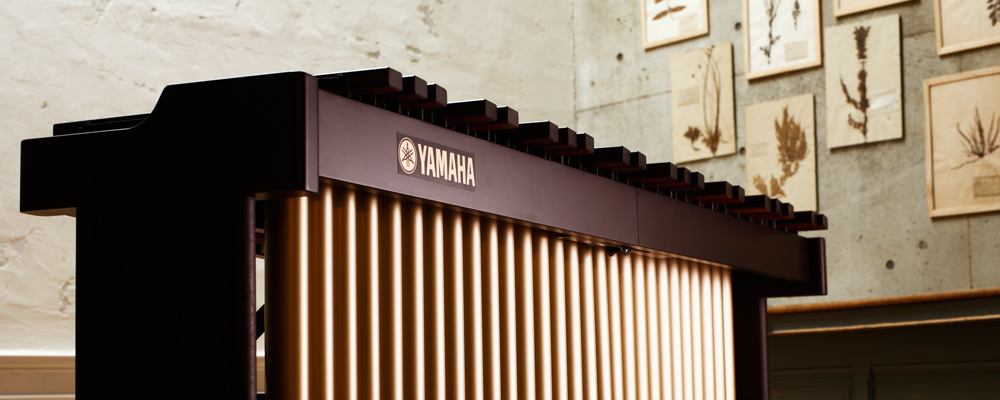Choosing a Marimba
Key points when selecting a marimba
If selecting based on the material for the tone plates
Rosewood has long been used as a material for tone plates, and it, indeed, possesses excellent characteristics. This is the material that purists love. Another popular material, along with rosewood, is padauk. The material itself is soft, producing a softer timbre than rosewood. There are also FRP tone plates, which were designed with intention of producing a sound similar to that of rosewood with another material. FRP stands for fiber-reinforced plastic. It is a synthetic material made by compacting bundles of glass fibers together with plastic. Compared to wood, this material is relatively unaffected by changes to the environment, allowing instruments to be played with a stable sound all the time.
How big of a range is enough?
The most common, standard range of a marimba is four octaves. When the instrument is used to play in a band, nearly all songs will be covered by this range. Instruments that have been extended to four-and-a-half octaves by adding seven notes to the lower ranges of a four-octave model meet the needs of advancements to the marimba repertory. In particular, these instruments are very powerful in the role of the bass part in percussion ensembles. The five-octave marimba is an instrument that can cover nearly all contemporary music and music written for marimba players. At music colleges and in the professional world, this range has now become standard.
Musical Instrument Guide : Marimba Contents
Origins
Structure
- What kind of instrument is the marimba?
- Inside and outside the resonator pipes
- There is craft to the design of the tone plates, too
- [Experiment1]Tone plate sanding depth and sound pitch experiment
- [Experiment2]Tone plate sanding location and sound pitch experiment
- [Experiment3]Try changing the material of the resonator pipes

